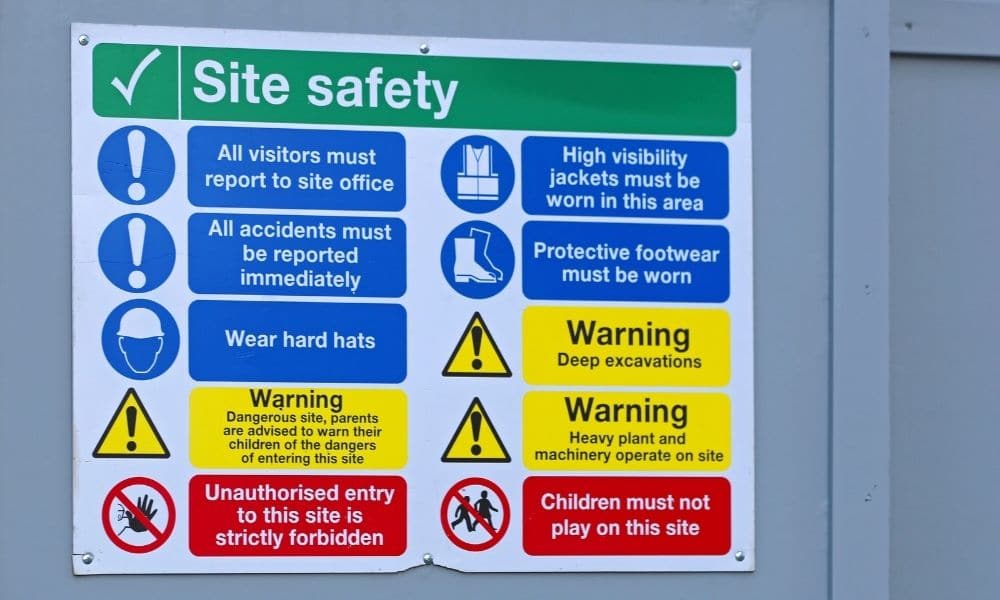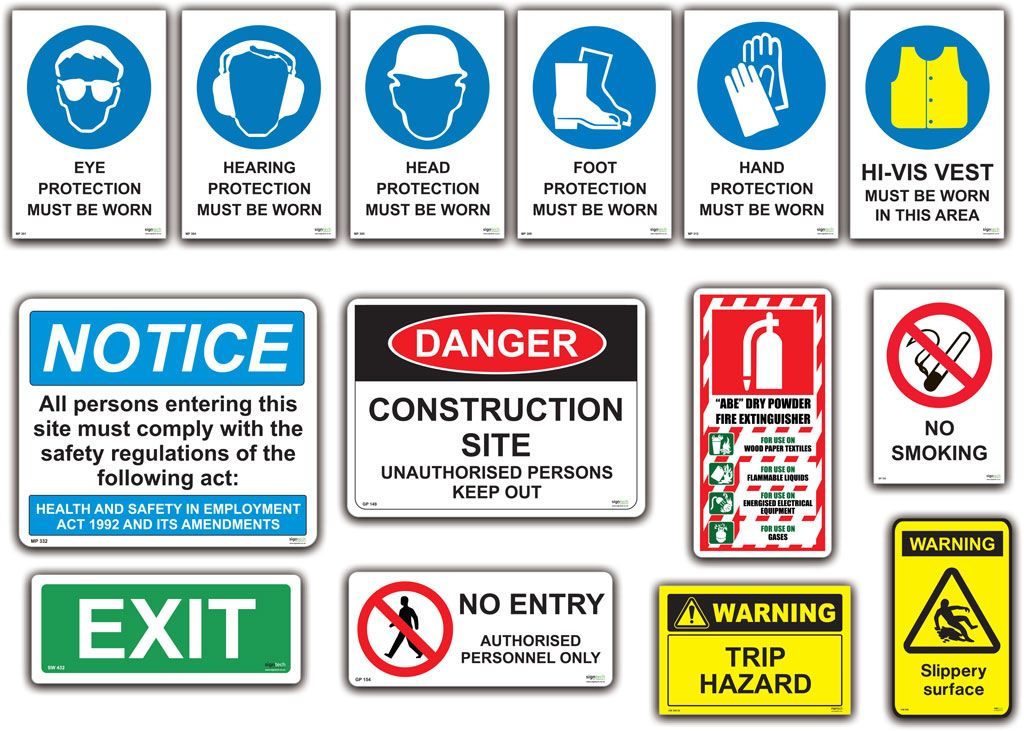A Thorough Review of Security Signs and Their Functionality in Connecting Threats and Safety Protocols
Safety and security signs play a crucial duty in guaranteeing understanding and conformity within various atmospheres, from commercial settings to public areas. The ramifications of these indicators prolong beyond simple conformity, triggering a closer examination of their effect on workplace safety and risk mitigation.
Sorts Of Security Signs
In numerous environments, recognizing the kinds of safety and security indications is important for making certain the health of individuals. Security indications are categorized mainly right into 4 kinds: indication, necessary indications, restriction indications, and emergency situation indicators. Each type offers a distinctive purpose in communicating critical information.
Caution signs, generally yellow with black signs, alert people to hazardous conditions or prospective hazards, such as unsafe floorings or dropping items - Construction Site Safety Signs. These indicators are important for avoiding crashes by educating individuals of dangers they might come across
Mandatory indications, blue and typically circular, show activities that need to be taken to ensure safety and security, such as using individual protective equipment or adhering to particular safety and security methods. Conformity with these indicators is crucial for maintaining a risk-free environment.
Prohibition signs, identified by a red circle with a diagonal line, show activities that are not enabled, such as "No Cigarette smoking" or "Do Not Enter." These signs assist to stop dangerous actions that could bring about injuries or crashes.
Last but not least, emergency signs, normally eco-friendly, provide directions for fire escape and safety equipment places. Their clear presence and immediate recognition are vital throughout emergencies, assisting in swift and safe emptyings.
Layout Concepts of Safety Indications
Efficient layout principles of safety and security signs are crucial for ensuring that they share info promptly and plainly to people in different atmospheres. The primary goal of a safety indication is to interact possible dangers and required safety measures, and this can be achieved through a collection of essential design aspects.
First, shade plays an essential duty in indication recognition. Particular shades are generally associated with particular significances; for instance, red shows threat or prohibition, while green indicates security or approval. The use of clear, understandable font styles ensures that the info can be read from a distance. Bold typography is suggested, with a minimum font size that sticks to exposure requirements.
Durability and weather resistance are necessary for exterior indications, making certain that they maintain exposure and efficiency under various problems. By sticking to these style principles, safety and security indications can successfully accomplish their purpose of promoting awareness and safety and security in varied settings.
Capability and Interaction

Reliable interaction via security indications depends on global signs and standard language. This method reduces misconceptions and offers clear advice throughout diverse populations, including those with varying degrees of language efficiency. A straightforward red circle with a diagonal line universally shares "prohibition," while an eco-friendly click square suggests security or allowable activities.
Moreover, the tactical placement of safety and security check in high-risk areas further enhances their capability. By positioning signs where they are most needed, organizations can much better protect against mishaps and advertise a society of security. The combination of reflective products and illuminated signage additionally plays an essential role in making sure exposure under various problems, therefore strengthening the importance of these essential communication tools in maintaining a risk-free atmosphere.

Regulative Standards and Conformity
Countless governing standards govern the design, positioning, and upkeep of safety indicators to make certain compliance and boost public safety. These criteria are developed by different organizations, including the American National Requirement Institute (ANSI) and the Occupational Safety And Security and Health Management great post to read (OSHA), which give guidelines on the specifications for signs, materials, and colors used in safety and security signage.
Conformity with these criteria is crucial as it not only cultivates a risk-free setting yet also lessens legal obligations. For circumstances, security signs should be notably put in locations where dangers exist and ought to be kept in a noticeable and legible condition. Using standard signs and language aids in reducing confusion and ensures that the intended message is effectively communicated to a varied target market.
Furthermore, organizations are needed to conduct regular audits and inspections of their safety signage to make certain recurring conformity with suitable policies. Failing to stick to these requirements can cause fines, raised danger of accidents, and jeopardized safety and security for employees and the public. Therefore, understanding and carrying out governing requirements is vital for any type of entity intending to focus on security through effective communication.
Significance in Workplace Safety
Recognizing the essential duty security indications play in office safety is necessary for cultivating a protected job environment. Construction Signs. These indicators serve as aesthetic hints, effectively interacting needed safety measures and prospective hazards to employees and visitors alike. By providing clear details, security signs minimize the threat of mishaps and injuries, making sure that employees understand their environments and the linked dangers
The relevance of security signs prolongs beyond plain conformity with policies; they are essential to growing a safety-oriented culture within the organization. Consistent use of properly designed indicators strengthens safety and security procedures, encouraging employees to embrace safe techniques index and stay vigilant. This positive strategy not only secures people yet also enhances general efficiency by lowering downtime connected with accidents.
Additionally, safety and security signs are important throughout emergency scenarios. Investing in quality safety signs is an essential element of any kind of detailed office safety method, mirroring a company's dedication to prioritizing the well-being of its workforce.
Final Thought

By adhering to these design concepts, security indicators can properly fulfill their function of promoting recognition and safety in varied settings.
Identifying the critical duty security signs play in office security is vital for promoting a secure work atmosphere. Investing in top quality safety signs is a fundamental facet of any thorough work environment safety and security technique, showing an organization's commitment to prioritizing the well-being of its workforce.
In final thought, safety and security indicators play a crucial duty in sharing dangers and security methods across numerous environments. Ultimately, the effective execution of security indicators adds significantly to take the chance of reduction and the promotion of a culture of security within organizations.